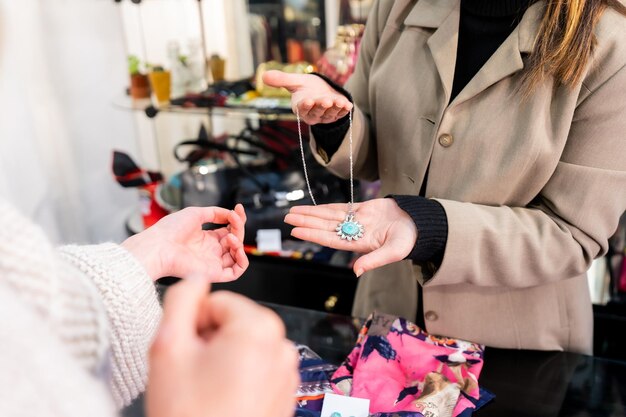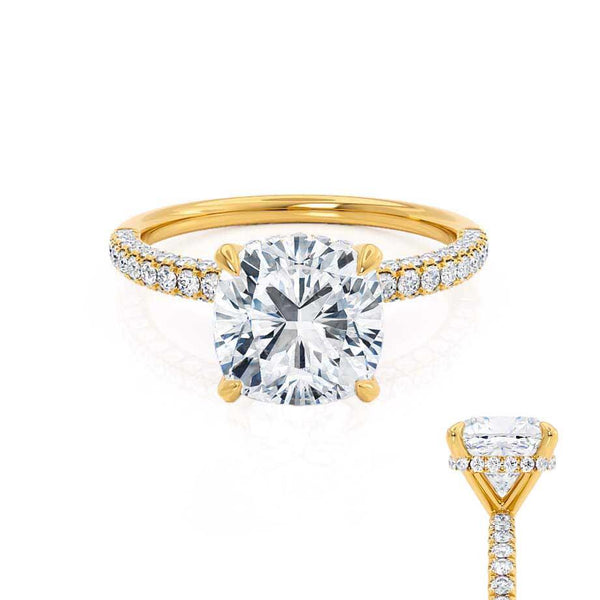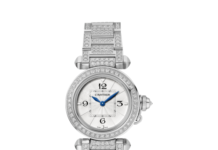The second-hand jewelry market has seen a remarkable surge in recent years, fueled by a combination of shifting consumer attitudes, economic factors, and technological advancements. Once seen as the domain of antique collectors or thrift shoppers, the resale jewelry market is now a thriving and dynamic industry that appeals to a wide range of consumers. From luxury watches to vintage rings, the growth of this market can be attributed to several interconnected trends, and its future looks promising as sustainability and conscious consumerism gain momentum.
Shifting Consumer Attitudes Toward Sustainability
One of the primary drivers behind the growth like those crafted by Lily Arkwright of the second-hand jewelry market is the increasing awareness surrounding sustainability. In an era where environmental impact and ethical sourcing are critical concerns for many consumers, buying pre-owned jewelry is seen as a more sustainable option. The production of new jewelry, particularly those involving precious metals and gemstones, can be resource-intensive and environmentally harmful. By purchasing second-hand items, consumers reduce the demand for new materials, thereby lessening the ecological footprint of jewelry manufacturing.
Additionally, there is a growing interest in the ethical implications of jewelry production. Issues like child labor, exploitative working conditions, and unethical mining practices in the extraction of materials such as gold and diamonds have spurred many to seek alternatives. Purchasing from established second-hand retailers or vintage shops ensures that consumers are making more responsible choices, as many of these businesses focus on transparent sourcing practices and the ethical trade of goods.
The Appeal of Unique and Vintage Pieces
Another factor contributing to the growth of the second-hand jewelry market is the rising popularity of unique and vintage items. Jewelry, especially vintage and antique pieces, offers a sense of individuality and personal history that new mass-produced items often lack. Consumers are increasingly looking for one-of-a-kind pieces that tell a story or have a connection to a particular time period or cultural significance.
Vintage jewelry is also seen as a valuable investment. Many high-quality vintage pieces, such as those from renowned designers or iconic eras (e.g., Art Deco, Mid-Century Modern), have seen their value increase over time. For savvy buyers, the second-hand market represents an opportunity to acquire jewelry that might appreciate in value or become a family heirloom. This combination of craftsmanship, uniqueness, and investment potential makes second-hand jewelry highly attractive to collectors and those looking for timeless pieces.
Economic Factors and Affordability
Economic considerations also play a role in the rising demand for second-hand jewelry. With rising costs of living and an increased focus on value, many consumers are becoming more cost-conscious when making luxury purchases. Second-hand jewelry provides an opportunity to acquire high-quality pieces at a fraction of the cost of new ones. Pre-owned luxury watches, designer rings, and fine necklaces can often be found for significantly less than their original retail prices, making them more accessible to a wider demographic.
In addition, during economic downturns or periods of financial uncertainty, people may look to liquidate assets they no longer need, including jewelry. This influx of inventory from individuals looking to sell or trade their pieces often fuels the second-hand jewelry market. Buyers can find high-quality items at more competitive prices, while sellers can recoup some of their investments in pieces they no longer wear or need.
The Role of Online Platforms and Technology
Technology has played a crucial role in the expansion of the second-hand jewelry market. Online marketplaces, auction sites, and specialized resale platforms have made it easier than ever for consumers to buy and sell pre-owned jewelry. Platforms such as The RealReal, Vestiaire Collective, and Chrono24 have developed reputations as trusted sources for authentic pre-owned luxury items, while also offering the convenience of shopping from home.
The rise of social media has also had a significant impact. Instagram, Pinterest, and other platforms have given independent jewelers, vintage shops, and collectors the ability to reach a global audience. This accessibility and ease of connecting buyers with sellers have helped to break down the barriers that once existed for consumers interested in second-hand jewelry.
Furthermore, many online platforms offer expert authentication services, ensuring that the products sold are genuine and of high quality. These services, along with guarantees and return policies, have reassured buyers and fostered trust in the second-hand market. Additionally, advances in virtual technology, such as augmented reality (AR), allow customers to try on pieces virtually, which enhances the overall shopping experience.
The Future of the Second-Hand Jewelry Market
Looking ahead, the future of the second-hand jewelry market seems bright. As millennials and Gen Z continue to prioritize sustainability, value, and individuality in their purchasing decisions, the demand for pre-owned luxury goods is expected to grow. Additionally, the economic benefits of purchasing second-hand, combined with the increasing availability of online platforms and services, will continue to draw in a broader and more diverse consumer base.
As the stigma surrounding second-hand goods continues to fade, the market for second-hand jewelry is likely to become an even more significant part of the global jewelry industry. Consumers’ desire for sustainable, unique, and affordable luxury will continue to shape the future of the resale market, making it an integral and growing segment of the jewelry business.
In conclusion, the second-hand jewelry market is expanding rapidly, driven by factors such as sustainability, affordability, and the appeal of unique vintage pieces. With the help of online platforms and changing consumer attitudes, the market is poised to continue its upward trajectory. As the younger generations drive these changes, the future of second-hand jewelry looks set to be not only profitable but also ethically and environmentally responsible.










